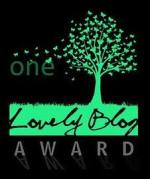Innocently tripping across the fourth dimension

In a month confusticated by a switch to a different video conferencing package, the Beamers persevered to escape from the selfless conformity of pop literature with the help of a book that was passed from publisher to publisher as being too different. Instead, A Wrinkle in Time by Madeleine L’Engle kicked off a quintet of books involving the Murry family and their very much themselves members, particularly the youngest, Charles Wallace (never “Charlie”!). Woven amid a lot of fantastical speculation on tesseracts, centaurs, good vs. evil, and the life and after-life of stars, there is a simple message of love. Would the Beamers think that is all they need? Or would they demand something more, like a delicious turkey dinner?
Is it animal, vegetable, or mineral?
Published in 1962, A Wrinkle in Time went on to win the Newbery Medal for children’s literature, and at the same time attract enough complaints and requests to have it removed from school libraries that it registered as one of the most banned books of the 20th century. Written with child protagonists, it incorporates some knowledge of space-time warping and higher geometries such as 4th-dimension cubes (known as tesseracts). It also brings in a plethora of religious traditions, which is the main source of the complaints lodged against it, that it is both too religious and not religious enough. At the center is Meg, a young woman just starting high school and shy about her looks and worried about her missing father. She is also smart enough to be bored in school and inattentive to her lessons. Meg, in many ways, is a portrait of the young sf/f reader, so it is easy to see how we can love her. Along with her super-genius 5-year-old brother Charles Wallace, she and the most popular boy in high school, Calvin O’Keefe (himself a misfit within his own family) will follow the directions of three extra-dimensional beings (Mrs. Whatsit, Mrs. Who, Mrs. Which) on a planet-hopping journey to free the trapped Mr. Murry, a physicist who unwisely used a tesseract to travel into the clutches of a universal evil.
One quick consensus among the Beamers was the uncluttered prose of the book, making it a quick read (a reason that Alan not finishing led to his being teased, loudly). What is cluttered is the narrative of the book. Things happen, in all directions. Mrs. Whatsit is a comical village lady, then a centaur with wings, then a 2.5-billion-year-old star. And, all along, an angel. Maybe. There is a vast store of references and traditions on which the book draws. Mrs. Who speaks in quotes, from ancient to modern sources, in multiple languages (translations to English gratefully provided). (And yes, she tosses in the obligatory Macbeth 3 witches quote.) The villains take the form of dark clouds, men with red eyes, implacably ordered computers, and disembodied brains. Somehow, with the constant forward movement, the book escapes needing to put all these disparate elements into any kind of fixed matrix and just lets them all mix and match in scenes of growing tension, until the final release is made by Meg proclaiming her love for Charles Wallace. Nick was reminded of the works of C. S. Lewis, mainly for the emphasis on religious and spiritual journeying that the characters undertake. But I liked the comparison with Lewis’s disdain of “foolish consistency” and inclusion in his Narnia books of anything that made him smile (Father Christmas! Talking horses!). Fran was a little less forgiving of the farrago of folks who do shift shapes as fast as they change dimensions.
It’s a family affair
What does hold the book together are the characters, the Murry family and Calvin, the happy interloper. Fran found Meg to be a very real teenaged woman, with both the bursts of love and frustration that the teen years tend to mix into our developing selves. Chris was taken with the young Charles Wallace, a character who does steal scenes with his uncanny vocabulary and his just-shy-of-snarky remarks. Movie-fan Chris also watched the 2018 Ava DuVernay adaptation and felt that Deric McCabe took over as the center of attention in the film. I liked the collective Murry clan (Nobel Prize winning mother and father, Meg, practical-minded middle twins Sandy and Dennys, and Charles Wallace) who together had a strong family vibe to their interactions that was not always untroubled and not rigidly cheerful, but more like a loving family with their moments of tension and strain. Not hard to see how Ms. L’Engle was inspired to write 5 books with such a likable crew.
In the end, we must have felt lucky to have met the Murrys as the ratings of ‘7’ abounded, with Chris, charmed by the innocence of the tale of redemption through love adding one more point for an ‘8’. Given the crowded Beamer reading list, it did not seem likely that we would be tagging more of the Time quintet onto our schedule, but I can attest that they do make a nice “snack” for a day or two (as I re-read the first 3 books in a week). If they never quite make complete sense nor ever quite settle into any one genre or mode of storytelling, well, neither do the Beamers in our likes and dislikes and choices for future works. At least for one volume, it was a marriage made in the 4th dimension.
- Posted in: Meeting Notes
- Tagged: A Wrinkle in Time, Book, Madeleine L'Engle, Science Fantasy
